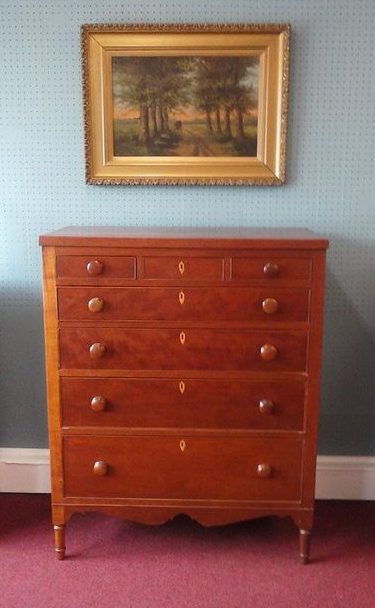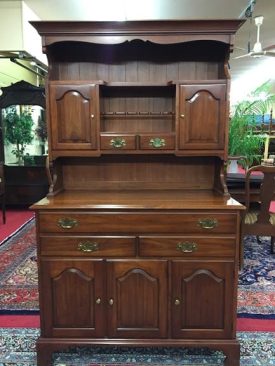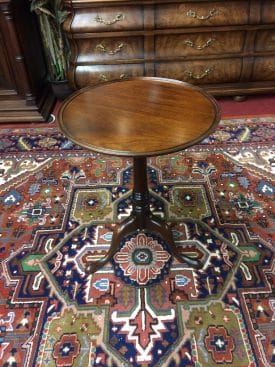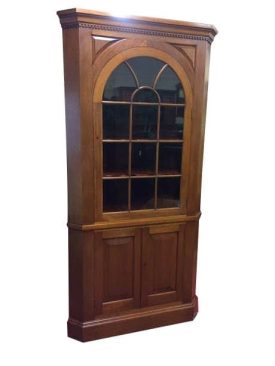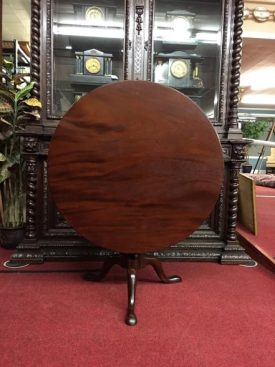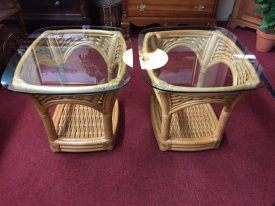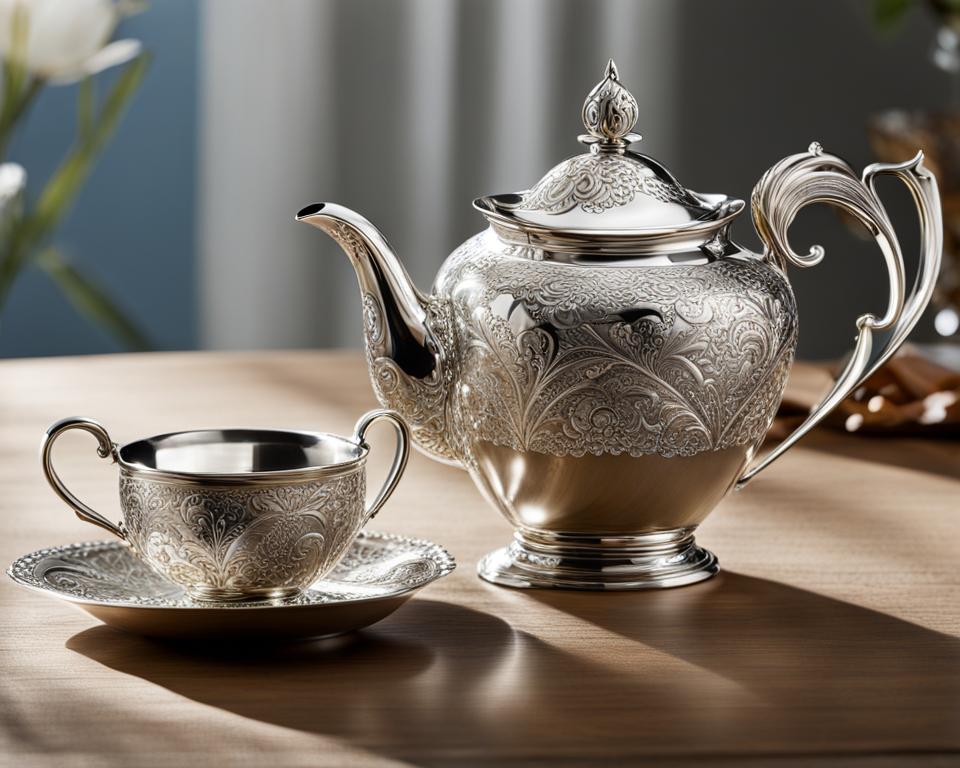If you are interested in Antique Chests of Drawers, please see our Antique Dressers page! This page is devoted to Antique Blanket Chests, Antique Cedar Chests and Antique Trunks.
How to Identify Antique Chests
Antique chests and antique blanket chests were important storage pieces for early American settlers as well as wealthy Victorian people traveling by train and boat. So, it is very important to identify the age of your antique blanket chest before assigning it value.
Also, there are many different types of antique trunks out there, so read on to learn more.
Antique Immigrant Chests
Antique Immigrant Chests often have carved, painted or unique details that help collectors trace them back to the country of origin. Today they also be called an antique blanket chest.
For instance, very early English Immigrants chests may adopt the William and Mary style, with heavy oak carvings and paneled sides. You may also see short straight legs on an antique William and Mary Chest.
Of course, we can assume that the more ornate and complex an antique immigrant chest is, the wealthier the owner. We sold a few beautiful antique immigrant chests with amazing carvings and they always were such a statement piece for the new owners.
Not only do these incredible pieces have 300 years of history, but they have a unique and phenomenal look!
Early American Antique Chests
Very Early blanket chests typically have many beautiful features. As the earliest Americans had to plane the wood by hand, and dowel and use hide glues to construct them, you often see signs of their handiwork.
Sometimes, you may hear the term, “Six Board Blanket Chest” to describe very simple early antique chests that were made of very large single boards on every side. Sometimes, you may see that the inside of the antique chest is rougher than the outside.
Likewise, the hinges and metal parts on very early American Antique Chests were forged by metal workers by hand. Old hinges and hardware typically were made of pure wrought iron. Of course, wealthier people also put a lock and key on their chest, in order to keep their items safe.
Especially desirable on early antique chests are dovetailed sides. Dovetailing is a woodworking term that describes the interlocking joints of two perpendicular corners. Because antique chests were crafted by hand, you will often see imperfections and signs of this handiwork!
Painted Antique Chests
Painted Antique chests are so unique and beautiful to behold! There are two major types of painted antique chests to consider: one is the Folk Painted Chest and the other is the “Grain Painted Chest.
Folk Painted antique chests typically hail from German and Pennsylvania Dutch immigrants. We usually see unique folk art animals, flowers and words and dates decorating Pennsylvania Dutch chests of this nature.
With this type of artful decoration, these types of chests often served as dowry or wedding chests for newly married couples. They may have the happy couple’s initials on the top or side. Many times, these types of chests show warn paint and chipping sides. Despite this, these chests normally can find their homes of private collectors and museums!
Grain Painted Chests are a unique early American phenomenon. Because softer woods are more plentiful and affordable, people came to design their blanket chests by looking at the intense and artful grains of mahogany and tiger maple wood for inspiration. Then, they mimicked the look of these grains with dappled paint and brushstrokes! The first “faux painting” was born!
Antique Travel Trunks
Antique Travel Trunks, often called “Steamer Trunks,” date to the mid 1800’s to the early 1900’s, largely corresponding with the Victorian era. Many antique travel trunks have resurfaced in the last decades, as they were pretty plentiful as train and boat travel advanced. In fact, most families with a few generations of history in the U.S. have inherited one or more of these antique chests or have seen them in the attic!
You will see several styles of travel trunks on the market today. The most common are either flat top or domed or camel back style trunks. Of course, flat-tops usually have wooden planks and leather straps. Flat-top antique chests were easy to transport and store on boats, trains and carriages.
Camelback chests have a dome and allowed for wealthy travelers to store even more within!
You may also hear the term “Saratoga” chest when it comes to antique chests. Saratoga manufactured high end trunks with very organized and fancy interiors. You may see drawers and multiple compartments inside Saratoga chests, as well as very serious hardware. These high-end chests were the Luxury Brand of the day for wealthy vacationers!
Antique Cedar Chests
Antique cedar chests came about around the turn of the century. In about 1900, antique cedar chests hit the market as a way to store wool blankets and protect from moths and other insects. (Cedar is a natural insect repellent.)
By the 1920’s and 1930’s, many people purchased cedar chests for their bedrooms to place at the foot of their antique beds (they were no longer used for moving around the country.)
You may see art deco style blanket chests with “Waterfall” edges” (rounded along the top edge), and complex veneer work. Typically, they featured walnut veneers on the exterior. One early maker out of Illinois to look for is “Roos Cedar Chests.”
By the 1940’s and 1950’s, there were several manufacturers competing in the cedar chest market. Lane Cedar Chests out of Lane, Virginia were quite popular, as were Cavalier brand chests. Other manufacturers out of Grand Rapids, Michigan can commonly be found today as well.
How Much are Old Chests Worth?
How much are old chests worth today? Are old trunks valuable? How much is an old cedar chest worth?
When trying to place value on a piece of antique furniture, we need to assess modern uses. Of course, antique chests and trunks typically stand as fixtures at home, rather than pieces we want to travel with. So, of course, antique chests have to have a good look, and serve a purpose.
Many people find that the plentiful Victorian trunks and steamer trunks can serve as unique coffee tables at home. Of course, higher end trunks in excellent condition can reach higher prices ($400-$800), while simpler trunks or ones with damage to the straps or finish typically bring between the $100-$300 range.
Likewise, cedar chests can still serve as their original purpose today! Many people love the smell and look of cedar today, and have a great nostalgic feeling when they open them! I would say simple vintage cedar chests from the 1930’s through the 1960’s can reach a retail value of $150-$700.
However, antique chests with special history, like early American chests or Immigrant Chests, can really have a high valuation today. Many people collect early American pieces, and their unique artistry as well as their age makes them very desirable. They can have a much broader price range, from anywhere between $800 and $8000 and up!
Of course, a special provenance, or unique history would help an antique chest reach this price point. Antique chests of this nature really serve as rich pieces of art and should be treasured and kept with care.
However, beauty lies in the eye of the beholder. So, if you believe you have a very early antique chest, you may wish to have it appraised by an auctioneer or licensed appraiser.
Find an Antique Chest For Sale
You may also want to look through the information at Bohemians antiques they have a page about antique chest of drawers.

